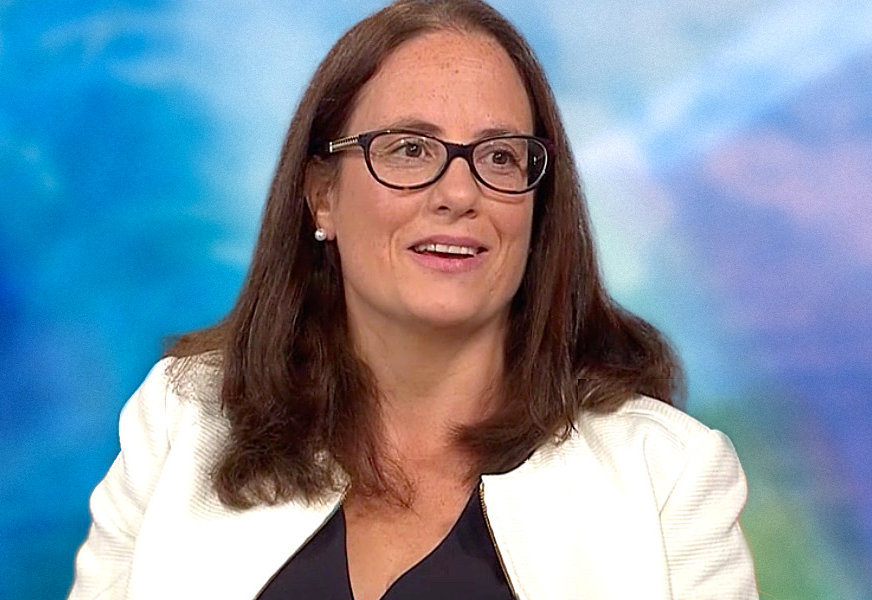The US Treasury’s auction of seven-year notes last Thursday saw the lowest investor appetite ever, according to some sources, leaving primary dealers holding the securities. The subsequent sell-off in Treasuries also reportedly saw certain sell-side firms stepping back from the wider market.
“Liquidity worsened noticeably last week. In [the] cash space, bid/offers reached their widest levels since last March/April when liquidity was starting to recover following the initial COVID-related shock,” wrote Morgan Stanley’s global macro analyst team. “The same goes for futures space, with the exception of in late November/early December 2020, when futures bid/offers widened with the confluence of future rolls, the Thanksgiving holiday, and month-end.”
Tradeweb reported a record single-day volume for US government bonds on Friday 26 February, when more than US$210 billion was facilitated on its platforms, as well as US$60 billion of European government bonds.
While the poor appetite in primary Treasury markets acted as a catalyst for the sell-off, concerns around rising inflation – which is seen in certain sectors – and the potential for an economic recovery post-Covid were the background.

“Issues started before the auction – that just tipped everybody over the edge,” says Nichola Hunter, head of rates at bond market operator MarketAxess. “There was activity in the Asia time zone first which was reportedly off the back of market sentiment pricing in the potential for an earlier Federal Reserve rate hike and sentiment that the economic recovery was going to be faster.”
For buy-side fixed income traders, the event was largely confined to the government bond markets.

“Outside of auto-spotting being shut off, [credit traders] probably wouldn’t have noticed unless they were paying attention to the Treasury market,” says Mike Nappi, senior fixed income trader at Eaton Vance. “Spreads were off but the volatility we were seeing in IG credit spreads was certainly tame compared to Treasury vol and equity vol.”
The global head of bond trading at another major US asset manager said, “Credit markets have been pretty resilient. Bid/ask across most fixed income markets is back or through pre-Covid levels. Technical backdrop is still firm even with supply.”
Concerns have not been at a trading desk level, so much as at an investment strategy and market structural level. Analysis by fixed income analytics provider Overbond reported that overall market liquidity had edged higher over the most recent four-week period, while the spreads had tightened.
“In terms of Treasuries, we had expected 10-year yields somewhere between 1.50% and 2.00%, but were unprepared for the speed with which we reached that target range,” the firm observed. “Yields have since retreated back toward the 1.40% level, in what is likely a consolidation phase before moving higher. A 2.00% yield is not out of the question at this stage, especially with inflation showing up everywhere—except in the monthly ‘core’ numbers of central bankers.
“The pressing thing in markets is the level of valuations,” noted the global head of bond trading. “Not a lot of juice left.”
The risk
From a trading perspective the situation could trigger more sudden price movements which might provide opportunities for capable investment and trading operations, if they have access to liquidity at the right points.
Hunter says, “We look at market structure all the time and we look at ways that clients and dealers can maximise their execution choices. If there are opportunities for new protocols or ways of executing that come out of these events then that is where we are focused.”
Eaton Vance’s investment and trading operations were able to spot opportunities in the March 2020 sell-off, and Nappi notes that even last week’s moves offered a chance to benefit asset owners.
“When you get higher yields there are some names, especially up the curve, where spreads tighten,” he says. “They tighten because they are hard to find names or just in demand; for example, there’s a bond we are long on, and on days like that we are trying to buy more.”
However, some investment managers were unable to access liquidity in last year’s sell-off – specifically because they could not find liquidity providers to provide them with a price – and this raised concerns regarding market structure.

Speaking remotely at the 2021 Annual Washington Conference of the Institute of International Bankers on 1 March 2021, Lael Brainard, Federal Reserve Governor, said, “The crisis highlighted vulnerabilities in the critically important Treasury market that warrant careful analysis.”
Structural change
Suggested reforms have included improvements in data collection and transparency, the application of Reg ATS to dealer-to-dealer platforms, standing facilities supplied by the Fed to backstop repos in stressed conditions.
“Other possible avenues to explore include the potential for wider access to platforms that promote forms of ‘all-to-all’ trading less dependent on dealers and, relatedly, greater use of central clearing in Treasury cash markets,” she added. “These measures involve complex trade-offs and merit thoughtful analysis in advancing the important goal of ensuring Treasury market resilience.”

Morgan Stanley’s economics team led by Ellen Zentner, noted that Governor Brainard’s focus on market developments, were specifically around the moves and speed of the moves, with concern if she saw disorderly conditions or a persistent tightening in financial conditions that would slow progress in the recovery.
“We found this notable (they wrote) because the read-through from Brainard was really that the concern was around the speed and disorderly nature of the market move, and not the direction – boiling it down, the message to markets read to us as ‘you’re headed in the right direction, but not so fast’.”
For Hunter, Brainard’s comments suggest that revisiting how to help firms trade will be necessary in order to better support liquidity formation.
“This has been another inflection point for all of us in the industry to take another look,” she says.
©Markets Media Europe 2025
























